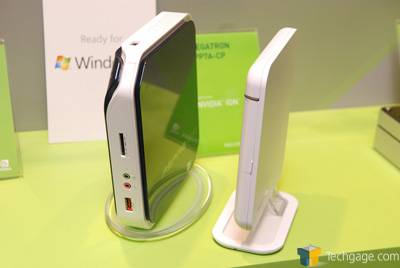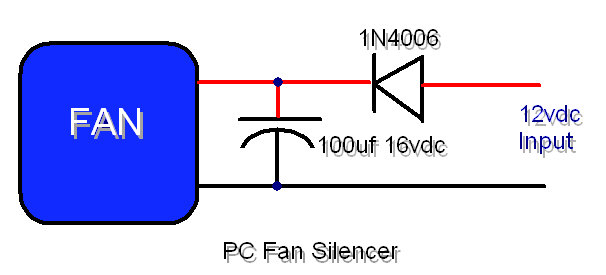Heh, wow. Nice post!
Actually there are near silent fans out there, but they don't exist in the world of computers.
I beg to differ! Good quality 200mm sized fans are completely inaudible, or at least mine are. The three Cooler Master 200mm fans used in use on my HAF 932 are inaudible at full speed but still push a sufficient amount of air. I can hold my ear right against them and I don't hear anything beyond the gentle flow of air.
For more reasonable 120mm sizes the Noctua NF-P12 fans are completely inaudible at full speed unless you hold your ear behind one. At which point you can ever so faintly hear the fan motion, but it's inaudible beyond a few inches. I can't fathom why they included 9V and 7V undervolting wires for these fans as I don't see the need them. About 1300rpm is the cutoff point for 120mm fans, above that even if the fan is silent the airflow it pushes becomes audible, so these fans give me the maximum amount of airflow I can get without it becoming audible.
I don't pretend to be an expert on fan bearings as it sounds like you know much more than I do here, but isn't what you are describing also the same as FDB, or Fluid Dynamic Bearings? A growing number of fan manufacturers use FDB bearings, in fact most hard drive manufacturers have been using FDB bearings in their hard drives for a couple years as well. Hydro Wave bearings are not specific to Panaflo either, just look at how many cheap brands on Newegg offer them!:
Link Hmm, come to look closer at it, Rexus IS Panalfo... I've never heard of Rexus before, but even if you look at the photos the fans are labeled Panaflo! Very interesting indeed...
Just reading the list at Newegg, they have fans that offer "Nanoflux Bearing (NFB)", "Magnetic Barometric", "Vapo Bearing", "Superflo", and a few others that are less exotic such as Rifle ball bearings (Better than standard ball bearings). Sony and a growing number use their own version of a fluid bearing design in their own fans, but as ya can see many manufacturers call their fluid-based bearings by different names. I don't pretend to know which are marketing words and which is actually new or improved technology, I'm sure many are not true fluid bearings at all but I know FDB is.
Then we arrive at Noctua, which is an actually reputable cooling company compared to most of those. Noctua uses an "SSO bearing" in their fans, which they describe in
in some detail here. Either way, safe bet it they are at minimum as good as an FDB would be, if not better. And as you mention in your points, the blade is hooked so cavitation becomes a concern. This specific model uses notches in the blades in order to reduce the causes of cavitation in the design. Noctua has some very different blade designs that range the spectrum, and they appear to have some very credible background in airflow design to back them up. In my opinion it helps they offer a six year warranty
on these fans.

I fully agree with your points. The problem is the bearing is not what makes the
most noise on computer fans, it's the airflow. So undervolting addresses the noise created by the airflow... and then we do arrive at your main points. With that in mind I do agree the bearing type and construction of the fan play the largest role with a low RPM fan. But Panalfo fans are not as great as you might think once undervolted to address their airflow noise, and yes they are designed to be undervolted to as low as 7V.
It's a bit of a coincidence, but the seven fans that came with this Cube case (I love ebay) are all 120mm Panaflo brushless fans that use the the Hydro Wave bearings you describe. I can attest that even once I mute the airflow noise by undervolting them to around 9v (I have not measured exact voltages at specific controller settings, so I'm ballparking my figures), the motors develop a growl, two of them growl loud compared to the rest while a third has a very annoying clicking but doesn't growl as much. Once I set them to ~5V they are all almost silent unless I have my ear within a foot of them in a completely silent room. I can volt most of them higher to take advantage of the increased airflow to around 6-7V without increasing the noise, but three of them I must keep just above ~5V else the "growl" becomes audible or the clicking on one of them starts to occur. At normal 12V operation none of them growl or click, but the ~85CFM airflow is definitely loud at 35.5dBA.
These are the fans You mention the Panaflo hydro weave fans specifically address some of your very valid points, however these are still brushless fans.
Your small fix to apply to these brushless fans is interesting, currently I use a Sunbeam fan controller as my Vantec fan controller didn't have sufficient channels even though I consider it of better construction. Is it only the voltage regulation in the power supply that is at issue here, or are there other considerations? I can take a multimeter and check on that easily with how these fans were built. This is however why I hold Noctua in such high regard... using a fan controller increases the power draw of a computer and dumps more heat into the case, those vRegs will burn you if you touch one! Noctua fans don't need any controller to be fully silent, and even if I had ears
as sensitive as some I could change out the 3pin plug for a LNA or UNLA plug to lower the fan speed. It's cheaper, there's significantly less wiring and less mess, and the computer uses less power to function. The only real issue is Noctua charges even more than Panaflo/Rexus seems to for a 120mm model... but for a six year warranty, I'll probably get a free fan upgrade once I wear these out.
I've had plenty of experience with sleeve bearing and 1 & 2 ball bearing fans in my short time in the PC world. I'll never buy a sleeve bearing fan, as while quieter than ball-bearings they wear out in no time flat. Ball bearings last longer, but I've worn out enough Antec fans (And had enough noise issues with them) that I won't buy those or Antec fans ever again either. Rifle-bearing fans are better, but still as 2Tired2Tango says there are better options. The only fans I'd buy today would be FDB or some type of fluid bearing fan, they appear to be just as quiet or quieter than sleeve bearings with better longevity than even rifle ball-bearing fans. What a huge post this became... I'd better end it here.



